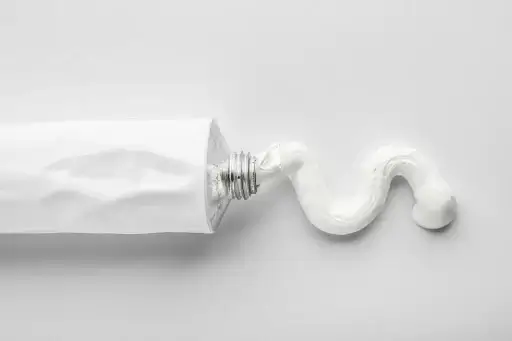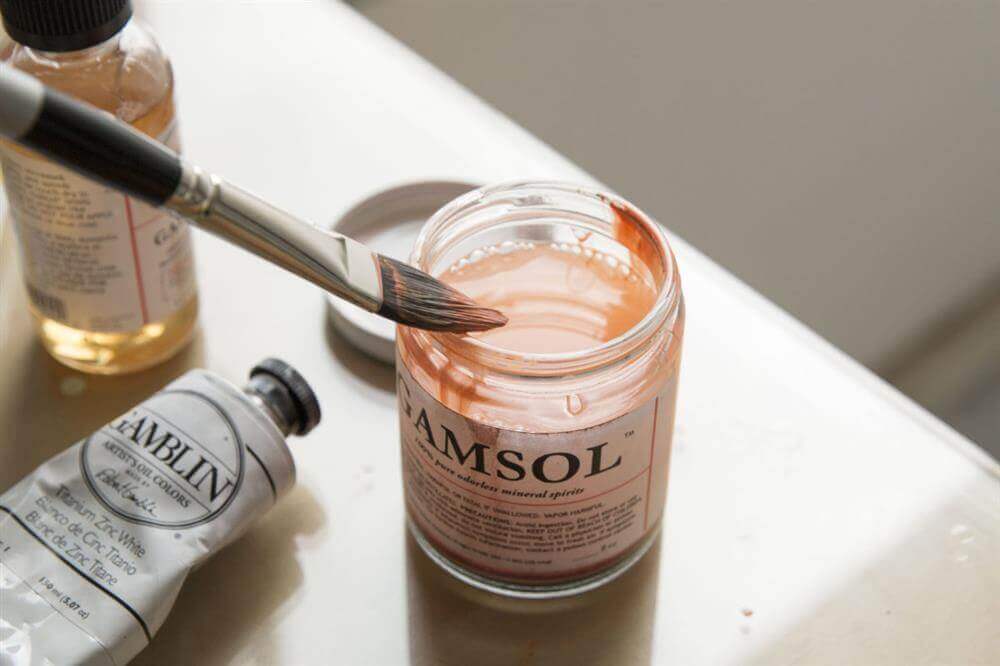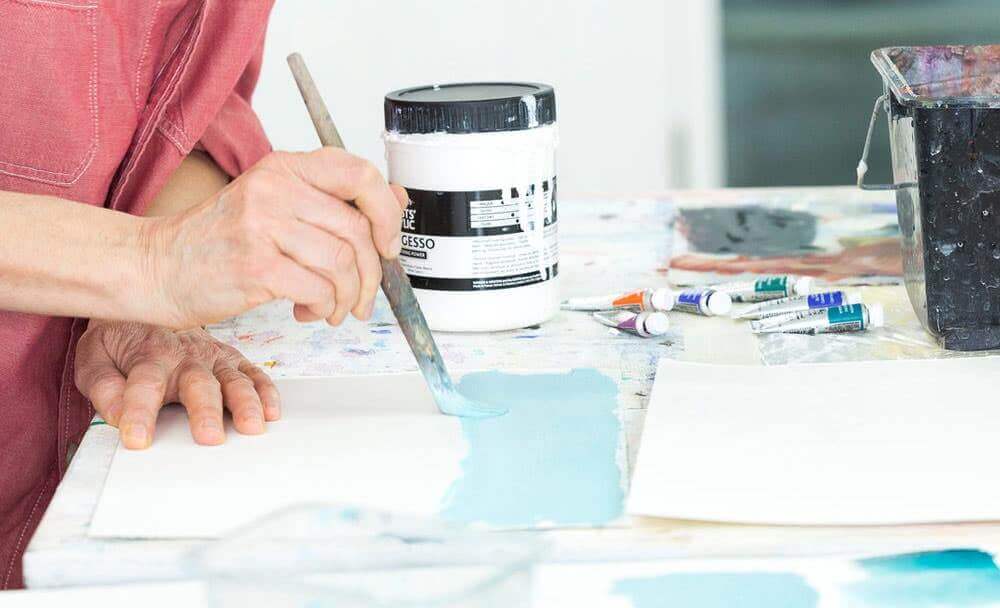Why is Oil Paint So Expensive?
What is oil paint?
Oil paint is surrounded by a fair bit of mysticism, which can be confronting for those looking to try painting with oils for the first time. Steeped in tradition, oil paint and has been popular among some of our greatest artists throughout history. Famous artists such as Van Gogh, Rembrandt, Frida Kahlo, Klimt, or even Monet painted almost exclusively in oils. So, because of its historical significance, oil painting has been one of the most celebrated and admired forms of art throughout centuries.
Oil paint is easily workable and slow drying, with a buttery viscosity that makes blending colours quite easy. Due to its slow drying nature, the painting process with oils is also slower and its complexity as a material can often feel like a barrier, particularly in comparison to working with acrylics. However, working with oils offers great flexibility and durability. An oil painting kept in the right conditions will last for centuries. Trying oil painting for the first time can be daunting, but once this initial hurdle is over, we would argue that oil paint quickly becomes the most versatile and easily controlled painting medium out of all.
How is oil paint made?
Oil paint is made from powder pigment mixed with an oil binder, usually linseed oil or in the case of some specific pigments such as whites and light colours, safflower oil is used. Traditionally, oil paint can be made by hand with a palette knife or glass muller and laboriously rolled and folded until all oil and pigment are completely blended. Oil paint bought from the store is made by strong friction from large industrial steel roller mills. This gives the paint a perfect buttery consistency every time.
Why do some colours cost more than others?
Pigments are why oil paint colours can differ so much in price. Different pigments are sourced using different methods or from different origins, which all then factor into the price. Most things you come across in the world have a colour that has been created with dyes. Natural dyes are made from substances like plants, roots, berries bark, however most modern dyes are synthetic and made from chemical products derived from petroleum. This makes dyes much cheaper and more commercially available than powdered pigment; most cheap paints that you buy at the store for a few dollars will be made with dyed chalk (or similar) instead of pigment. When it comes to artist grade materials, the colour comes from powdered pigment. Powdered pigment is pure unadulterated colour and the higher the quality or the rarity of a pigment, the higher the price.
It's important to know that different colours will be processed differently based on the pigment. Some colours interact with the oil binder differently to others and therefore need to be handled differently during manufacturing. This phenomenon exists in all powder pigment paints, for instance, the colour Prussian Blue cannot attach to an acrylic binder, so there is no true Prussian Blue acrylic paint, only paint that looks like Prussian Blue (i.e. Prussian Blue Hue). Then there are other colours that will require a higher pigment load to hold its form (up to 75% pigment loading is required for some colours) or there are colours that will need to be milled for longer – all these different labour costs are then reflected in the price.
As stated earlier, cheap paint has synthetically produced pigment in it (dyed chalk), plus other substances such as fillers or modifiers, ultimately yielding a weaker, less lightfast, unsaturated paint. These cheap paints make it hard to mix colours without losing saturation or vibrancy. Artist grade paints use unadulterated pigments which will allow you to mix incredible colour successfully, without losing saturation, with even only the basic primary colours. So, ultimately good paint is worth the cost. It has more unadulterated pigment, less fillers, flows better, is easier to move, dries better with a stronger flexible film, won’t fade in a few years, and allows you to blend a greater range of colours.
Why do they take so long to dry?
Unlike water-based paints, oil paint dries through oxidation instead of evaporation. Paints like acrylics or watercolours dry when the water content evaporates out from the paint, however oil paint dries through a chemical reaction where its exposure to oxygen causes the oil binder in the paint to harden. Cold air will slow the rate of oxidation and hot air speeds it up - you’ll notice your paint drying faster and slower in summer verses winter.
It is preferable to let oil paint dry at the speed it requires, but there are several methods that help speed up the drying process. Using an oil painting medium can alter the drying time of oil paint. Mediums such as like Galkyd, Winsor & Newton’s Liquin, or Langridge’s Underpainting Medium will help speed up the drying time of your oil paints leaving them touch dry overnight. It is important to note that even though an oil painting is touch dry, it can still take up to 6 months if not longer (depending on how thick the paint is) for an oil painting to be completely cured. So, if you’re painting in a very thick impasto style, perhaps like Ben Quilty, these paintings may not be completely cured for years. If you wanted the paint to dry quicker and utilise oils greatest feature, it’s glazing ability, you’ll want to paint in thinner layers which will dry much more quickly.
It is also good to know that certain oil paints themselves dry faster than others. For instance, earth colours such as raw sienna, burnt sienna or burnt umber are known to dry very fast. This makes these colours a great choice for the tonal underpainting stage for a lot of artists, especially for Alla Prima (wet on wet approach). Other faster drying oil paint colours include Prussian blue, Cobalt Blue and other cobalt variants, Manganese Violet, Manganese Black, and Naples Yellow. Alternatively, some colours that are known to dry quite slow are Cadmium Red, Alizarin Crimson, Quinacridone Red, Quinacridone Magenta, Carbon Black or Zinc White.
How to save money on oil paint
Paint with fewer colours
When learning how to paint it can be tempting to buy the set of fifteen to twenty individual tubes. This can be costly and there may be many colours from the set that don’t get used as frequently as others, or even at all. You may have some understanding of the basic principles in colour theory, often illustrated in a colour wheel divided into primary colours (red, blue, yellow) and their secondary and tertiary colours. This wheel is a useful tool to learn practical colour theory for mixing colour. It demonstrates how a simple palette of primary colours can be used to mix virtually every other colour.
Although it can make the mixing process slower and initially more laborious, once you begin to understand simple colour theory, you’ll be able to make every colour you can imagine with just three colours. Starting off with a Red, Blue, and Yellow (with the addition of perhaps a White) is a great way to really save money on your paint and simplify your painting process. All colours can be made from these three colours, including black and brown.
Only stock up on the essentials
When starting there’s no need to splash out on an entire painting kit, from the easel to the smock, the palette, the brushes… the list goes on. You can still begin painting successfully with just the absolute essentials. Instead of spending big on a large easel, you could paint on a flat surface or buy a cheap desk easel. You don’t necessarily need a lot of brushes to start with either. Getting only three or four of different sizes to begin with will do just fine. Cheap disposable palettes are great for all levels of expertise and won’t break the bank. For instance, the Reno Tear Off Paper Palette or Mont Marte Round Plastic Palette are fantastic options when you are just starting out. It's important to remember your initial purchase of paints, brushes and solvent will likely be the largest purchase you have to make with oil painting but fortunately a lot of these will last you a long time. After this purchase buying art supplies will most likely be just little re-stocks here and there!
Use less paint
When putting paint on your palette you might notice that you always put more down than you ever actually use, ending up with a fair bit of wastage. To save this paint from going straight in the bin, some artists mix their excess paint together and put it in an airtight jar. They then use this as a grey/brown mix for toning their canvas, or in an underpainting layer. Alternatively, we recommended that you get into the habit of always putting down less than you think you’ll use, and then only squeezing more out of the tube once you’ve used the first bit up!
Keep what is on your palette for longer
Although oil paint does dry slowly, it is still easy to wish it would dry even slower. You can often spend thirty minutes to an hour pre-mixing all your colours on your palette, only to be interrupted or run out of time and it can be frustrating to find that the oils on your palette are already drying and unusable the next day. Following on from our earlier discussion, oil paint will dry slower in cold environments and this quality can be highly useful to preserve open oil paint. If you cling wrap your palette or put it in a Masterson’s STA-wet palette and then put it in your fridge or freezer, your oil paint can keep wet for weeks.
Choosing your Oil Paint
It’s challenging to know which oil paint you should start off with when you are a beginner. A great entry level oil paint we recommend is Daler Rowney’s Georgian oil paint. They are one of the best affordable and accessible entry level oil paints we stock. The next two ranges in terms of affordability are Art Spectrum Professional Oil Paint and Langridge Handmade Oil Paint. These are both Australian made, located, and manufactured in Victoria. The professional quality of these paints is outstanding particularly in comparison to their price point and we are lucky to have such great oil paint manufacturers so close to us here in Australia.
Another option would be the Gamblin Artist Oil Colour or Rembrandt Oils. Both manufactured and located overseas, these two brands are world renowned for their quality. We have found that Gamblin has the cheapest Cadmium, Cobalt, and Quinacridone paints, so we recommend going with Gamblin for your more expensive colours because the quality is better than most and even with the noticeably cheaper price.
Finally, the top of our range is Michael Harding Artist Oil Colours and Maimeri Puro Oil Colours. These two ranges are our greatest quality, highly pigmented oil paints with no fillers, modifiers, or additives. These are reserved for those beginners who wish to splash out on the absolute best, right from the get-go.
In summary
While certainly not exhaustive, we hope this resource has been helpful and answered some of your queries about oil paint and why it is so highly valued, sought after and respected among art patrons and artists alike.









